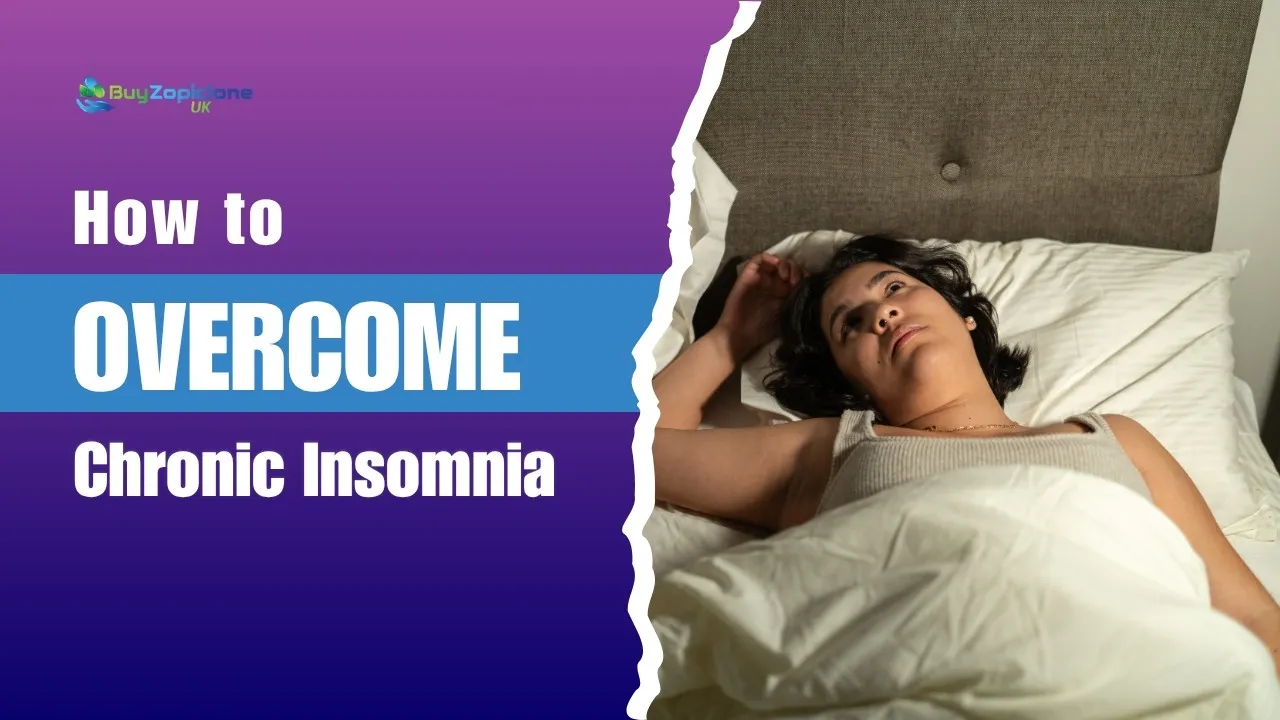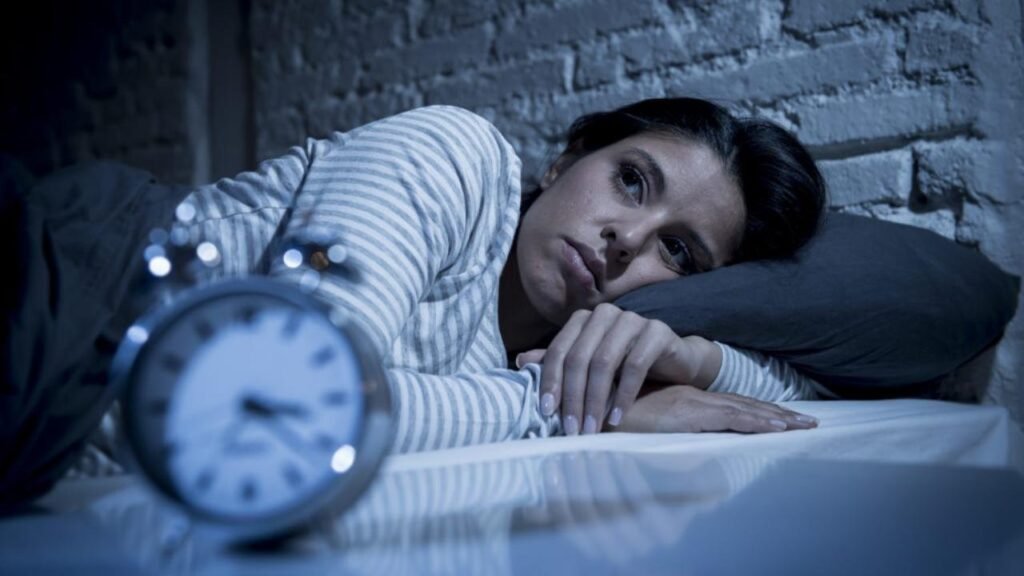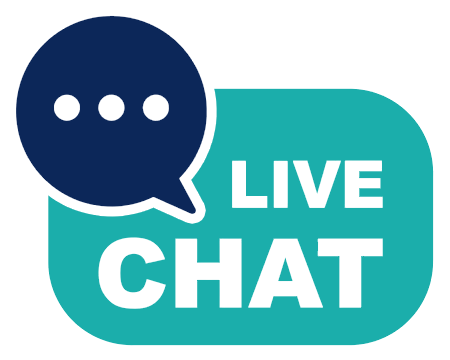Learn the most effective, scientifically-proven methods to beat chronic insomnia and achieve restorative sleep naturally without relying on medication.
What is Chronic Insomnia and Why Does it Matter?
Chronic insomnia affects approximately 10-15% of adults worldwide, characterized by difficulty falling asleep, staying asleep, or waking up too early for at least three nights per week over three months or longer. Unlike occasional sleeplessness, chronic insomnia creates a persistent cycle of sleep disruption that impacts every aspect of daily life.
The consequences of chronic insomnia extend far beyond feeling tired. Research shows that persistent sleep deprivation increases the risk of cardiovascular disease, diabetes, obesity, depression, and anxiety. It impairs cognitive function, weakens immune response, and significantly reduces quality of life. Understanding how to overcome chronic insomnia isn’t just about better sleep—it’s about reclaiming your health and vitality.
Many people with chronic insomnia feel trapped in a cycle where worry about sleep creates more sleep problems. The good news is that effective, evidence-based treatments exist that can break this cycle and restore healthy sleep patterns without long-term dependence on medications.
1. Cognitive Behavioral Therapy for Insomnia (CBT-I): The Gold Standard Treatment
What Makes CBT-I So Effective?
Cognitive Behavioral Therapy for Insomnia (CBT-I) consistently outperforms sleep medications in clinical trials for long-term effectiveness. Unlike pills that only work while you’re taking them, CBT-I teaches you skills that provide lasting relief from insomnia symptoms. Studies show that 70-80% of people who complete CBT-I experience significant improvement in their sleep.
CBT-I works by addressing the root causes of insomnia rather than just symptoms. It targets both the behaviors that interfere with sleep and the thought patterns that perpetuate sleep anxiety. This comprehensive approach makes it the first-line treatment recommended by sleep medicine specialists worldwide.
Core Components of CBT-I
Stimulus Control Therapy: Retraining Your Sleep Associations
Stimulus control therapy helps your brain relearn that the bedroom equals sleep. Over time, people with insomnia often develop negative associations with their bed and bedroom, viewing them as places of struggle rather than rest.
The key principles include maintaining consistent sleep and wake times seven days a week, using the bed only for sleep and intimacy, and implementing the “20-minute rule.” If you can’t fall asleep within 20 minutes, get up and do a quiet, non-stimulating activity until you feel sleepy again. This prevents your brain from associating the bed with frustration and wakefulness.
Sleep Restriction Therapy: Building Stronger Sleep Drive
Sleep restriction therapy might seem counterintuitive, but it’s one of the most powerful tools for overcoming insomnia. By initially limiting time in bed to match your actual sleep time, you create stronger sleep pressure and reduce the time spent lying awake.
For example, if you typically spend 8 hours in bed but only sleep 6 hours, you would limit your time in bed to 6 hours initially. As your sleep efficiency improves (spending 85% or more of your time in bed actually sleeping), you gradually increase your time in bed by 15-30 minutes per week.
Cognitive Restructuring: Changing Unhelpful Thought Patterns
Racing thoughts and sleep anxiety often fuel insomnia. Cognitive restructuring helps you identify and challenge catastrophic thinking patterns about sleep loss. Common unhelpful thoughts include “I must get 8 hours of sleep or I’ll be useless tomorrow” or “I’ll never be able to sleep normally again.”
Through cognitive restructuring, you learn to replace these thoughts with more balanced, realistic perspectives. For instance, “I’ve functioned on less sleep before, and one bad night won’t ruin my day” or “Sleep problems are treatable, and I’m taking steps to improve my sleep.”
Relaxation Training: Calming Body and Mind
Progressive muscle relaxation, deep breathing exercises, and guided imagery help reduce the physical and mental arousal that interferes with sleep. These techniques are particularly effective when practiced regularly, not just at bedtime.
Progressive muscle relaxation involves systematically tensing and then releasing different muscle groups throughout your body, helping you recognize and release physical tension. Deep breathing exercises activate your parasympathetic nervous system, promoting the relaxation response necessary for sleep.
Finding CBT-I Treatment
CBT-I is available through sleep specialists, psychologists trained in sleep medicine, and increasingly through digital platforms and apps. While in-person treatment often provides the best outcomes, online CBT-I programs have shown effectiveness for many people and offer greater accessibility.
2. Sleep Hygiene: Creating the Perfect Sleep Environment
The Science Behind Sleep Hygiene
Sleep hygiene refers to the habits and environmental factors that promote consistent, quality sleep. While sleep hygiene alone rarely cures chronic insomnia, it provides the foundation for other treatments to work effectively. Think of it as creating optimal conditions for your sleep system to function properly.
Essential Sleep Hygiene Practices
Timing and Consistency
Your circadian rhythm thrives on consistency. Going to bed and waking up at the same time every day—including weekends—helps regulate your internal clock. This consistency strengthens your natural sleep-wake cycle and makes it easier to fall asleep and wake up naturally.
Many people with insomnia try to “catch up” on sleep by sleeping in on weekends, but this actually disrupts their circadian rhythm and makes weeknight sleep more difficult. Maintaining consistent timing, even when you’ve had a poor night’s sleep, helps reset your sleep pattern more quickly.
Optimizing Your Sleep Environment
Your bedroom should be a sanctuary for sleep. The ideal sleep environment is cool (60-67°F), dark, and quiet. Temperature plays a crucial role in sleep quality because your body temperature naturally drops as you prepare for sleep. A cooler environment supports this natural process.
Darkness signals your brain to produce melatonin, the hormone that promotes sleepiness. Even small amounts of light can disrupt melatonin production, so consider blackout curtains, eye masks, or covering electronic devices that emit light.
Noise can fragment sleep even when it doesn’t fully wake you. If you can’t eliminate noise sources, white noise machines, fans, or earplugs can help create a more consistent sound environment.
Pre-Sleep Routine Development
Establishing a relaxing pre-sleep routine signals to your body that it’s time to wind down. This routine should begin 30-60 minutes before your intended bedtime and include only calming, non-stimulating activities.
Effective pre-sleep activities include reading (preferably fiction), taking a warm bath, gentle stretching, listening to calm music, or practicing relaxation techniques. Avoid screens, work-related activities, intense discussions, or anything that might increase alertness.
What to Avoid for Better Sleep
Stimulants and Their Timing
Caffeine has a half-life of 6-8 hours, meaning that afternoon coffee can still affect your sleep at bedtime. For optimal sleep, avoid caffeine after 2 PM, or earlier if you’re particularly sensitive. Remember that caffeine is found not just in coffee, but also in tea, chocolate, some medications, and energy drinks.
Nicotine is another stimulant that can interfere with sleep quality. While alcohol might initially make you feel drowsy, it disrupts sleep architecture, leading to fragmented, less restorative sleep. If you choose to drink alcohol, limit consumption and avoid it within 3 hours of bedtime.
Exercise Timing
Regular exercise significantly improves sleep quality, but timing matters. Vigorous exercise within 3 hours of bedtime can increase alertness and body temperature, making it harder to fall asleep. Morning or afternoon exercise provides the most sleep benefits.
Napping Guidelines
While short naps can be refreshing for some people, they can interfere with nighttime sleep if timed poorly or too long. If you must nap, limit it to 20-30 minutes and avoid napping after 3 PM.
3. Mindfulness and Stress Reduction Techniques
Understanding the Sleep-Stress Connection
Chronic stress and insomnia often go hand in hand, creating a vicious cycle where stress disrupts sleep, and poor sleep increases stress. Mindfulness and stress reduction techniques help break this cycle by teaching you to manage stress more effectively and calm your mind for sleep.
Research shows that mindfulness-based interventions can significantly improve sleep quality and reduce insomnia symptoms. These techniques work by reducing the hyperarousal that characterizes insomnia and helping you develop a different relationship with sleeplessness.
Mindfulness Meditation for Better Sleep
Mindfulness meditation teaches you to observe thoughts and sensations without judgment, reducing the tendency to engage with worrying thoughts that can keep you awake. Regular practice helps you develop the ability to notice when your mind is racing and gently redirect your attention.
For sleep specifically, mindfulness helps you avoid the common trap of “trying too hard” to sleep. The more you struggle to fall asleep, the more elusive sleep becomes. Mindfulness teaches acceptance of whatever arises, including sleeplessness, which paradoxically often leads to better sleep.
Body Scan Meditation
Body scan meditation involves systematically focusing attention on different parts of your body, noticing sensations without trying to change them. This practice helps you become aware of physical tension and naturally promotes relaxation.
Start at the top of your head and slowly move your attention down through your body to your toes. Notice areas of tension without judgment, and simply breathe into those areas. This practice can be particularly effective when done in bed as part of your wind-down routine.
Mindful Breathing Techniques
Focused breathing exercises help activate your parasympathetic nervous system, promoting relaxation and sleepiness. The 4-7-8 breathing technique is particularly effective for sleep: inhale for 4 counts, hold for 7 counts, and exhale for 8 counts.
Another effective technique is box breathing: inhale for 4 counts, hold for 4 counts, exhale for 4 counts, and hold empty for 4 counts. Repeat this cycle 8-10 times to promote relaxation.
Yoga for Sleep
Yoga combines physical movement with mindfulness and breath work, addressing both physical tension and mental stress. Gentle, restorative yoga poses are particularly beneficial for sleep preparation.
Research demonstrates that regular yoga practice can significantly improve sleep quality, reduce time to fall asleep, and increase total sleep time. The combination of physical movement, breathwork, and meditation in yoga provides multiple pathways to better sleep.
Effective Bedtime Yoga Poses
Legs-up-the-wall pose helps shift your nervous system into rest mode and can be particularly relaxing before bed. Child’s pose releases tension in the back and hips while promoting a sense of security and calm.
Gentle spinal twists help release physical tension and can be done right in bed. Avoid vigorous or heating yoga practices close to bedtime, as these can be too stimulating.
4. Addressing Underlying Medical Conditions
Common Medical Causes of Insomnia
Many medical conditions can contribute to or cause insomnia. Identifying and treating these underlying issues is crucial for lasting sleep improvement. Sleep apnea, restless leg syndrome, chronic pain, hormonal imbalances, and certain medications can all disrupt sleep.
Sleep Apnea and Sleep-Disordered Breathing
Sleep apnea affects millions of people and often goes undiagnosed. This condition causes repeated interruptions in breathing during sleep, leading to fragmented sleep and daytime fatigue. Common signs include loud snoring, gasping during sleep, morning headaches, and excessive daytime sleepiness.
If you suspect sleep apnea, a sleep study can provide definitive diagnosis. Treatment options range from lifestyle changes and CPAP therapy to oral appliances and surgery in severe cases.
Restless Leg Syndrome (RLS)
RLS causes uncomfortable sensations in the legs and an irresistible urge to move them, particularly at night. This condition can make it extremely difficult to fall asleep and stay asleep. RLS can be related to iron deficiency, pregnancy, or certain medications.
Hormonal Factors
Hormonal changes during menopause, pregnancy, or due to thyroid disorders can significantly impact sleep. Women going through menopause often experience hot flashes and night sweats that disrupt sleep. Thyroid disorders can cause either insomnia or excessive sleepiness.
Chronic Pain and Sleep
Chronic pain and sleep problems often create a vicious cycle. Pain makes it difficult to fall asleep and stay asleep, while poor sleep lowers pain tolerance and increases pain sensitivity. Effective pain management is essential for addressing sleep problems in people with chronic pain conditions.
Mental Health and Sleep
Depression and anxiety commonly co-occur with insomnia. In fact, insomnia can be both a symptom of these conditions and a risk factor for developing them. Treating underlying mental health conditions often leads to significant improvements in sleep.
Depression and Sleep
Depression can cause early morning awakening, difficulty falling asleep, and non-restorative sleep. Interestingly, sleep deprivation can also trigger or worsen depression, creating a bidirectional relationship between these conditions.
Anxiety Disorders
Anxiety often manifests as racing thoughts, worry, and physical tension that interfere with sleep. Generalized anxiety disorder, panic disorder, and PTSD can all significantly impact sleep quality. Addressing anxiety through therapy, medication, or both often leads to improved sleep.
5. Medication Considerations and Natural Alternatives
Understanding Sleep Medications
While medications can provide short-term relief from insomnia, they’re generally not recommended as long-term solutions. Most sleep medications lose effectiveness over time due to tolerance, and many carry risks of dependence and side effects.
Prescription Sleep Medications
Common prescription sleep aids include zolpidem (Ambien), eszopiclone (Lunesta), and zaleplon (Sonata). These medications can help with sleep onset but may cause next-day drowsiness, memory problems, and complex sleep behaviors like sleep-walking or sleep-eating.
Benzodiazepines like lorazepam or temazepam are sometimes prescribed for sleep but carry higher risks of dependence and cognitive impairment. These medications should be used sparingly and only under close medical supervision.
Over-the-Counter Options
Antihistamines like diphenhydramine (Benadryl) and doxylamine are common OTC sleep aids. While they can cause drowsiness, they’re not specifically designed for sleep and can cause next-day grogginess, dry mouth, and cognitive impairment, particularly in older adults.
Melatonin supplements can be helpful for certain types of sleep problems, particularly those related to circadian rhythm disorders or jet lag. The optimal dose is typically much lower than what’s commonly sold (0.5-3mg rather than 5-10mg), and timing is crucial for effectiveness.
Natural Sleep Aids and Supplements
Melatonin: Timing and Dosage
Melatonin is most effective when used to shift sleep timing rather than as a general sleep aid. For most people, taking 0.5-3mg of melatonin 30 minutes to 2 hours before desired bedtime can help regulate sleep-wake cycles.
Higher doses aren’t necessarily more effective and can actually interfere with your body’s natural melatonin production. Melatonin works best when combined with good sleep hygiene and consistent timing.
Herbal Remedies
Valerian root, passionflower, and chamomile have been used traditionally for sleep and have some research support. However, the evidence for their effectiveness is mixed, and they can interact with other medications.
Magnesium supplementation may help some people with sleep, particularly those who are deficient in this mineral. Magnesium glycinate is often better tolerated than other forms and may promote relaxation.
The Importance of Professional Guidance
Before starting any supplement or medication for sleep, consult with a healthcare provider. They can help identify potential interactions with other medications and ensure that you’re addressing any underlying health conditions that might be contributing to your sleep problems.
6. Advanced Treatment Options
Intensive Sleep Retraining
For severe, treatment-resistant insomnia, intensive sleep retraining offers a more aggressive approach. This technique involves staying awake for 25-30 hours, then sleeping for 4 hours, repeating this cycle multiple times under medical supervision.
The theory is that extreme sleep deprivation helps reset the sleep system and breaks the cycle of sleep anxiety. While some studies show promising results, this approach should only be attempted under professional supervision in specialized sleep centers.
Light Therapy for Circadian Rhythm Disorders
Light therapy uses bright light exposure at specific times to help regulate circadian rhythms. This treatment is particularly effective for people who fall asleep too early or too late, shift workers, and those with seasonal affective disorder.
Light therapy typically involves exposure to 10,000 lux of light for 30 minutes to 2 hours daily, timed according to your specific circadian rhythm pattern. The timing of light exposure is crucial for effectiveness.
Sleep Restriction Therapy Variations
Advanced sleep restriction protocols may involve more intensive scheduling and monitoring. Some programs use actigraphy (wearable devices that track sleep-wake patterns) to optimize sleep restriction parameters and track progress objectively.
7. Creating Your Personal Sleep Recovery Plan
Assessment and Goal Setting
Before starting any treatment program, it’s important to assess your current sleep patterns and identify specific goals. Keep a sleep diary for 1-2 weeks, tracking bedtime, wake time, time to fall asleep, number of awakenings, and how you feel in the morning.
Identify your specific sleep challenges: Do you have trouble falling asleep, staying asleep, or both? Do you wake up too early? Understanding your particular pattern helps guide treatment selection.
Implementing Changes Gradually
Rather than trying to implement all strategies at once, start with one or two techniques and gradually add others as they become habit. This approach prevents overwhelming yourself and allows you to identify which strategies are most effective for you.
A good starting point is to establish consistent sleep and wake times while implementing basic sleep hygiene practices. Once these are established, you can add relaxation techniques, stress management, or other interventions.
Tracking Progress and Adjusting Strategies
Continue keeping a sleep diary throughout your treatment to track progress and identify patterns. Some people see improvement within days, while others may need several weeks or months to see significant changes.
Be patient with the process and avoid the temptation to abandon strategies too quickly. Sleep patterns that have developed over months or years often take time to change.
When to Seek Professional Help
If you’ve consistently applied behavioral strategies for 6-8 weeks without significant improvement, it may be time to consult a sleep specialist. Professional evaluation can identify underlying medical conditions and provide access to specialized treatments like CBT-I.
Red flags that warrant immediate medical attention include loud snoring with gasping or choking, excessive daytime sleepiness despite adequate sleep opportunity, or movements during sleep that disturb your partner.
Long-Term Maintenance and Relapse Prevention
Maintaining Good Sleep Habits
Once you’ve achieved better sleep, maintaining healthy sleep habits is crucial for preventing relapse. Continue practicing good sleep hygiene, stress management, and relaxation techniques even when you’re sleeping well.
Many people make the mistake of abandoning their sleep practices once they start sleeping better, only to see their insomnia return. Think of sleep health as an ongoing practice rather than a problem to be solved once and forgotten.
Handling Setbacks
Occasional sleep difficulties are normal and don’t necessarily indicate a return of chronic insomnia. Stress, illness, schedule changes, or life events can temporarily disrupt sleep in anyone.
When you experience a few nights of poor sleep, return to your established sleep practices rather than panicking or trying desperate measures. Often, simply getting back to your routine will resolve temporary sleep disruptions.
Building Sleep Resilience
Developing a toolkit of strategies helps you handle sleep challenges more effectively. This might include having several relaxation techniques you can use, maintaining flexible but consistent sleep schedules, and knowing when to seek help.
Regular exercise, stress management, and maintaining social connections all contribute to overall sleep resilience and help prevent the return of chronic insomnia.
Conclusion: Your Path to Better Sleep
Overcoming chronic insomnia is entirely possible with the right approach and commitment. The evidence-based strategies outlined in this guide have helped millions of people reclaim healthy sleep and improve their quality of life.
Remember that lasting change takes time, and setbacks are a normal part of the process. The key is to remain consistent with your chosen strategies and be patient with yourself as your sleep system learns new patterns.
Start with the approaches that resonate most with you, whether that’s CBT-I techniques, sleep hygiene improvements, or stress reduction strategies. Many people find that a combination of approaches works best, and what works for one person may not work for another.
Most importantly, don’t suffer in silence. Chronic insomnia is a real medical condition that deserves proper treatment. Whether you work with a sleep specialist, use self-help resources, or try digital therapy programs, taking action is the first step toward better sleep and better health.
Your journey to overcoming chronic insomnia starts now. With dedication, the right strategies, and possibly professional support, you can break free from the cycle of sleepless nights and reclaim the restorative sleep you deserve.
Struggling with Sleepless Nights? Reclaim Restful Sleep Today!
Discover the calming power of Zopiclone—a trusted solution for managing insomnia. Wake up refreshed, focused, and ready to take on the day.
👉 Buy Zopiclone Online Now for fast relief and better sleep.
✅ Trusted by thousands
✅ Easy ordering & discreet delivery
✅ Quality sleep starts tonight!
🛒 Order Now and Sleep Soundly Again!
Ready to start your journey to better sleep? Begin with one or two strategies from this guide and track your progress with a sleep diary. If you need additional support, consider consulting with a sleep medicine specialist or exploring evidence-based digital therapy programs for insomnia.
Also Read: What Are the Different Types of Insomnia? Causes, Symptoms & Treatment in the UK





